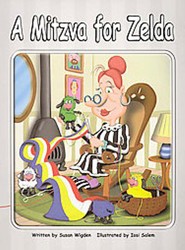By
– August 6, 2012
If the Genesis story of creation seems hopelessly abstract, The Seventh Day uses figurative language to make it tangible. God forms snow-topped mountains like a potter, colors the sky blue and yellow like a painter, and sings out roaring lions like a musician. On the sixth day, God makes a boy and a girl in God’s own image, using all the artistic possibilities: molding spaces between their toes, drawing rosy brown freckles, tickling “laughs into their bellies and prayers into their souls.” Then God rests, joined by the boy and girl in a Shabbat celebration complete with blessings and purple wine. Fluid illustrations in soothing colors help to reify the ancient story and convey the beauty of the created world — though without taking the opportunity to elaborate the narrative with extra details. This lyrical rendering conveys the spirit rather than the precise substance of the creation story. It doesn’t follow a strict order of events or explain what happened on each day (except the sixth and seventh), but it does make the story accessible. That God creates children encourages a young audience to relate to the characters. The choice to use only the first of the two Genesis creation narratives allows the story to flow; it also means that the boy and girl are created at the same time, which, coupled with the lack of gendered references to God, gives the story appeal for a liberal audience. Ages 3 – 8.
Phoebe Sorkin, who graduated from Columbia University, works in the editorial department of Little, Brown and Company Books for Young Readers.




